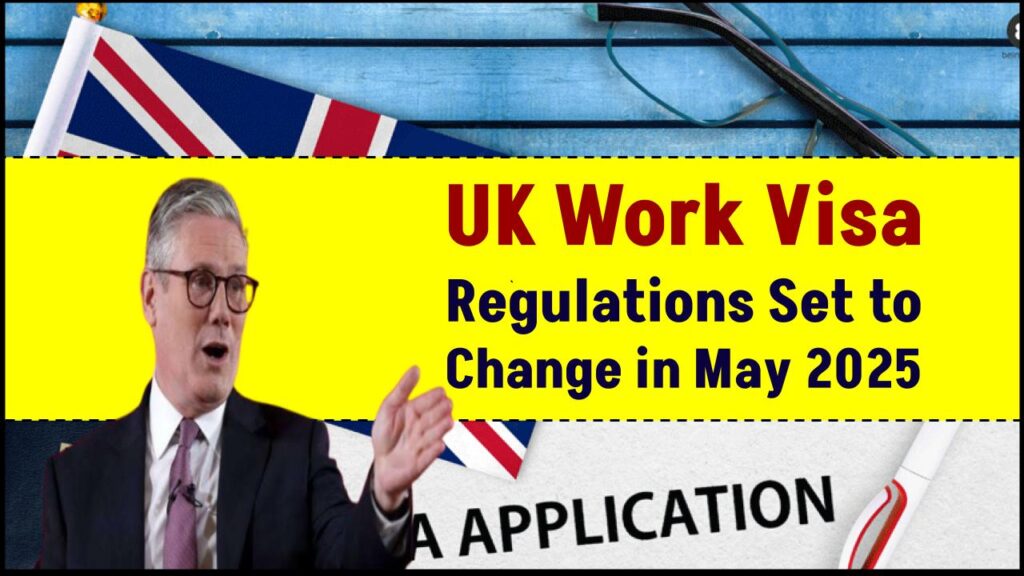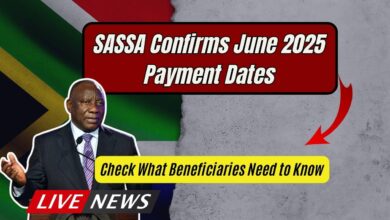UK Work Visa Regulations Set to Change in May 2025 — Check Important Updates
UK Work Visa Regulations : As of May 2025, the UK has rolled out significant updates to its work visa regulations, most notably affecting the Skilled Worker route. These changes involve higher salary thresholds, revised sponsorship costs, new eligibility criteria, and expanded rights for visa holders. Whether you’re an international job seeker, a UK-based employer, or an immigration advisor, understanding these new rules is essential. Let’s break them down in a clear, simple, and actionable way, without skipping the professional insights that matter.

UK Work Visa Regulations
| Topic | Details |
|---|---|
| New Salary Threshold | £38,700/year (up from £26,200) |
| STEM PhD Threshold | £30,960/year |
| Health & Care Visa Salary | £25,000/year minimum |
| Sponsor Licence Cost | £1,579 (large sponsor), £574 (small/charity) |
| Certificate of Sponsorship | £525 (up from £239) |
| Supplementary Work | Allowed up to 20 hrs/week, under conditions |
| Visa Fee Increase | 5–10% increase on most categories |
| Health Surcharge | £1,035/year per person; £776/year for under-18s |
| Official Visa Site | UK Skilled Worker Visa – GOV.UK |
The UK’s May 2025 work visa changes are among the most sweeping in recent years. While they raise the bar for both applicants and sponsors, they also aim to build a more sustainable immigration system and prioritize high-skilled professionals. As a job seeker or employer, staying informed is the first step. Prepare early, budget for higher costs, and consult trusted resources before applying.
What’s New in UK Work Visa Rules (May 2025)
Rising Salary Thresholds: What It Means for You
In the biggest change to date, the minimum salary requirement for most Skilled Worker visa applicants has jumped to £38,700 per year, a sharp increase from the previous £26,200 — an 82% rise.
Why does this matter?
- For Job Seekers: This could mean fewer entry-level job options unless the employer is ready to pay the new threshold.
- For Employers: More pressure to meet wage requirements to attract international talent.
However, there are exceptions:
- If you have a relevant PhD, the threshold lowers to £34,830.
- If your PhD is in a STEM field, it’s reduced further to £30,960.
- New entrants and certain roles on the Immigration Salary List also qualify under this lower threshold of £30,960.
Sponsorship Just Got Pricier
Employers now face higher costs for sponsoring foreign workers:
- Certificate of Sponsorship (CoS) now costs £525 (was £239).
- Sponsor licence fees are now:
- £1,579 for medium/large sponsors.
- £574 for small businesses or charities.
Important Note: Employers are not allowed to deduct these costs from the worker’s salary or pass them on to employees. Doing so could lead to licence revocation.
Supplementary Work – More Flexibility, With Rules
Visa holders can now take on extra work or even run their own business, but only under these rules:
- The supplementary work must be on the eligible occupation list.
- It can be a maximum of 20 hours per week.
- The primary job under sponsorship must remain your main employment.
Health and Care Worker Visa Updates
This category has also changed:
- The minimum salary for Health and Care Worker visas is now £25,000 per year.
- Employers must now prove efforts to recruit locally before hiring overseas workers.
Increased Visa and Immigration Costs
Applying for a UK visa is now more expensive:
- Most visa and nationality application fees have increased by 5–10%.
- The Immigration Health Surcharge (IHS) is now:
- £1,035 per person/year
- £776 for children under 18
The IHS is a mandatory fee for access to the UK’s NHS during your stay
Application Trends: A Sharp Decline
These changes have already impacted visa application numbers:
- Skilled Worker Visas dropped to 3,400 applications in March 2025, down from 10,100 in April 2024.
- Health and Care Visas fell to 1,700 in March 2025, compared to 18,300 in August 2023.
Step-by-Step Guide to Applying in 2025
Step 1: Secure a Job Offer
- It must be from a UK-licensed sponsor.
- The job role must be eligible under the Skilled Worker visa list.
Step 2: Check Your Salary
- Your offered salary must meet the new threshold, depending on your role and qualifications.
Step 3: Get Sponsored
- Your employer issues a Certificate of Sponsorship and pays the required fees.
Step 4: Submit Your Visa Application
- Pay visa fees and the Immigration Health Surcharge.
- Provide biometric data and required documents.
Step 5: Wait for Approval
- Standard processing time is about 3 weeks, but may vary.
Breaking: June 2025 Visa Bulletin Reveals Major Changes for U.S. Immigration Applicants
H-1B Visa Updates 2025: New Rules, Application Tips, and Critical Highlights Explained
May 2025 Australian Work Visa Update: What’s New and How It Affects You
FAQs on UK Work Visa Regulations Set
Q1: Can I bring my family with me?
Yes, Skilled Worker visa holders can bring dependants (spouse/partner and children). They must apply separately and pay the health surcharge.
Q2: What counts as an eligible job?
Jobs must appear on the Skilled Worker eligible occupations list. Roles in IT, engineering, healthcare, and education are commonly included.
Q3: Can I switch employers?
Yes, but the new employer must also be a licensed sponsor. You’ll need a new CoS and must update your visa.
Q4: What if my salary is slightly below the threshold?
You won’t qualify unless your job meets an exemption (e.g., new entrant, PhD holder). Salary rules are strict.
Q5: Do these rules apply to student visa holders switching to work visas?
Yes — if you’re switching from a student visa, your new employer must meet all Skilled Worker criteria.







